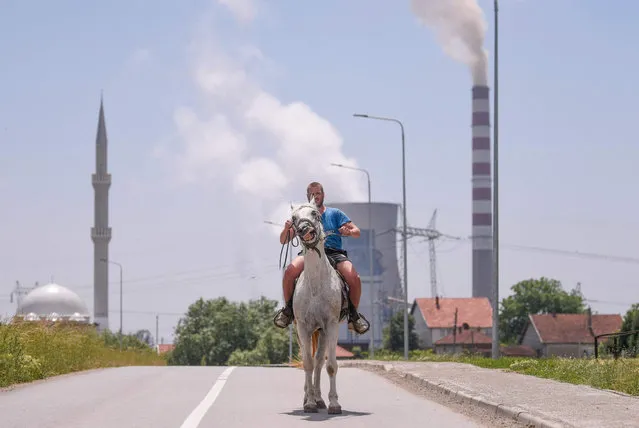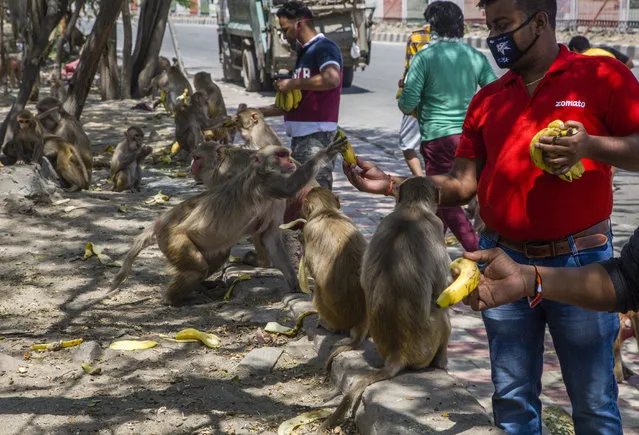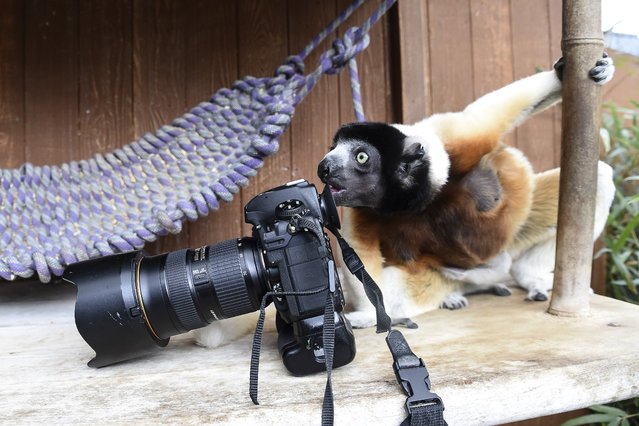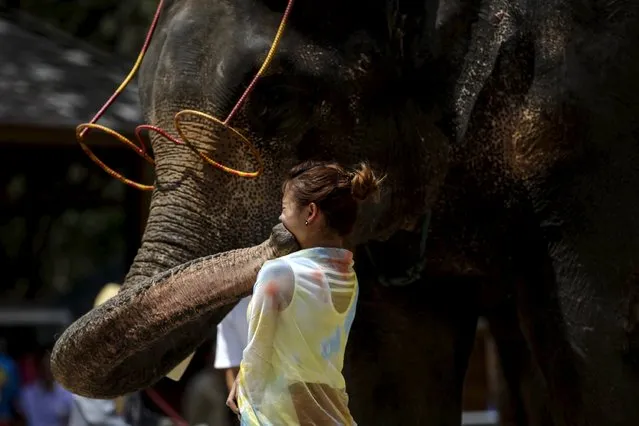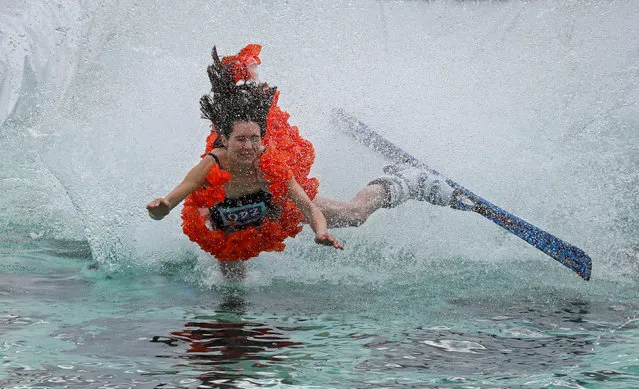
A skier in a festive costume attempts to cross a pool of water at the foot of a ski slope while competing in the annual Gornoluzhnik amateur event to mark the end of the ski season at the Bobrovy Log ski resort in the suburbs of the Siberian city of Krasnoyarsk, Russia, April 14, 2019. (Photo by Ilya Naymushin/Reuters)
17 Apr 2019 00:07:00,post received
0 comments


